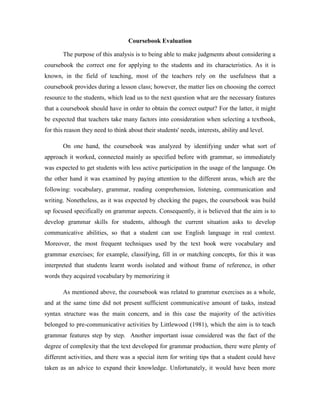The document summarizes a teacher's views on using coursebooks for English classes. The teacher believes coursebooks should focus on students' interests and local context. While frequently using books for reading and vocabulary, the teacher supplements less with online materials for more engaging grammar activities. The teacher emphasizes practicing communicative skills like speaking and listening, especially for students only having English 3 hours per week.














